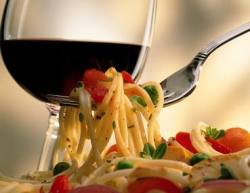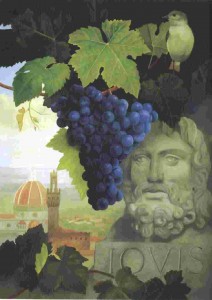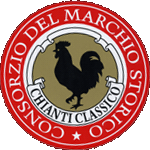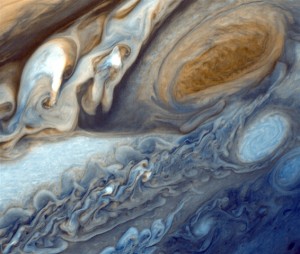by Lorri | Oct 26, 2011 | UnCorked
 I think we all assume pasta and wine are a straightforward pairing. Pick an Italian wine and the match should work. Over the past few weeks I have experimented with different pasta and wine combinations. It was arduous work but somebody had to do it.
I think we all assume pasta and wine are a straightforward pairing. Pick an Italian wine and the match should work. Over the past few weeks I have experimented with different pasta and wine combinations. It was arduous work but somebody had to do it.
The experiments reinforced one basic rule: It doesn’t matter if the pasta is long, short, a tube or spiral … it’s the sauce and filling that counts.
Pasta served with meatballs and meat-based sauces such as bolognese pair best with reds such as zinfandel, sangiovese, merlot, shiraz, syrah.
THE VALUE
- 2009 Cline Cellars Sonoma County Syrah, California (about $12 retail)
THE SPLURGE
- 2008 Ridge Vineyards Ponza Zinfandel, California (about $30 retail)
Dishes such as spinach lasagna, ricotta-stuffed manicotti or stuffed mushrooms partner well with chardonnay, Soave, pinot noir.
THE VALUE
- 2010 Mark West Central Coast Pinot Noir, California (about $12 retail)
THE SPLURGE
- 2009 Rex Hill Willamette Valley Pinot Noir, Oregon (about $25 retail)
When it comes to seafood pasta dishes, whether crab, mussels, shrimp or lobster, white wine such as chardonnay, sauvignon blanc, albarino or pinot grigio is the way to go.
THE VALUE
- 2010 La Cana Albarino, Spain (about $17 retail)
THE SPLURGE
- 2010 Keenan Napa Valley Chardonnay, California (about $25 retail)
For creamy sauces, safe bets include chardonnay or Soave.
THE VALUE
- 2011 Kendall Jackson Avant Chardonnay, California (about $13 retail)
THE SPLURGE
- 2010 Cakebread Cellars Napa Valley Chardonnay, California (about $31 retail)
Pinot grigio, Orvieto, sauvignon blanc and albarino are good options for cold pasta salads.
THE VALUE
- 2011 Ruffino Orvieto, Italy (about $10 retail)
THE SPLURGE
- 2011 A to Z Pinot Gris, Oregon (about $17 retail)
Pesto can vary from the familiar blend of basil and pine nuts to more unusual combinations like sun-dried tomato or roasted red peppers and walnuts. Consider sangiovese, merlot or chardonnay for complementary wines.
THE VALUE
- 2010 Michel Lynch Merlot, France (about $12 retail)
THE SPLURGE
- 2008 Bell Vineyards Yountville Merlot, California (about $34 retail)
by Lorri | May 11, 2011 | UnCorked
 Last week’s column on the story of the Chianti Classico rooster was just the beginning of my exploration of the colossal offerings of the prolific Italian wine region.
Last week’s column on the story of the Chianti Classico rooster was just the beginning of my exploration of the colossal offerings of the prolific Italian wine region.
With more than 27 percent of the region’s sales occurring in the United States, you would expect U.S. consumers to have a good understanding of this region.
There is some confusion, though, likely the result of the sheer immensity of Italian wine offerings.
The primary grape of the Chianti region is the sangiovese, which flourishes on the Tuscan hillsides between Florence and Siena.
Chianti Classico must contain a minimum 80 percent sangiovese, and during my visit many Chianti producers expressed a shift to 100 percent — known as “pure” — to truly showcase the spirit of the sangiovese grape. Other grapes, such as the local canaiolo and colorino or cabernet sauvignon and merlot, can be added. Traditionally the white grapes trebbiano and malvasia were used, but since 2006 they are no longer allowed.
Chianti Classico wines have two distinct styles: the Vintage Year (annual) and Riserva (reserve). The vintage year is a fresh, fruity wine meant to be consumed young. A riserva is much different and strikes a balance between elegance and potency. Riserva wines are aged to provide the finest expression of sangiovese with its full-bodied, complex style. To qualify as a riserva, strict standards must be met, including a minimum of 12.5 percent alcohol, maturation for a minimum of 24 months with at least 3 months in the bottle before going to market.
THE VALUES
- 2008 Castello di Monastero Chianti Classico, Italy (about $24 retail)
- 2008 San Jacopo Chianti Classico, Italy (about $21 retail)
- 2009 Banfi Chianti Classico, Italy (about $15 retail)
- 2008 Cecchi Chianti Classico, Italy (about $18 retail)
THE SPLURGES
- 2008 Villa Antinori Peppoli Chianti Classico, Italy (about $32 retail)
- 2008 Dievole Chianti Classico Riserva, Italy (about $64 retail)
- 2008 Melini Terrarossa Laborel Chianti Classico Riserva, Italy (about $32 retail)
by Lorri | May 4, 2011 | UnCorked
 Just home from Italy with pages of notes and findings, I aim over the next few weeks to offer helpful information about the sometimes confusing and misunderstood Chianti Classico region.
Just home from Italy with pages of notes and findings, I aim over the next few weeks to offer helpful information about the sometimes confusing and misunderstood Chianti Classico region.
A question I’m often asked is, “What does the black rooster on the neck of the bottle represent?”
It denotes that a company is a member of the Consorzio Vino Chianti Classico. That consortium’s mission is protecting, overseeing and maintaining the prices of the Chianti Classico denomination. Exactly how the rooster was chosen comes with a legend.
In the Middle Ages, when the republics of Florence and Siena were fiercely battling for territory in the Chianti region, they came up with a novel method to end that exhausting conflict. It was agreed that two knights would set out from their respective cities and establish the border wherever they met. Departure was to be at dawn and the starting signal at each end would be a cock’s crow.
In those days, daily rhythms were still paced by natural phenomena, so the choice of rooster would be more crucial than either knight or steed. The Sienese chose a white rooster, the Florentines a black one, which they kept in a pen in the dark with no food for days, putting the poor thing in high distress.
On the day of departure, as soon as the black rooster was released from its prison, it began to crow long before dawn. The Florentine knight departed immediately while the Sienese rider had to wait until dawn, when his white rooster crowed.
The Sienese knight rode only about 7 1/2 miles before meeting the Florentine knight far short of the halfway point between Siena and Florence.
Thus, thanks to the black rooster, practically all of Chianti came under the control of the Florentine republic. And thus the emblem of the black rooster on Chianti Classico labels.
THE VALUES
- 2009 Cecchi Chianti Classico, Italy (about $14 retail)
- 2009 Straccali Chianti Classico, Italy (about $14 retail)
THE SPLURGES
- 2009 Castello D’Albola Chianti Classico, Italy (about $19 retail)
- 2009 Rocca Delle Macie Chianti Classico, Italy (about $28 retail)
- 2009 Piccini Chianti Classico, Italy (about $19 retail)
by Lorri | Apr 20, 2011 | Lorri's Wine Diary
Today, I am sitting in Italy typing my blog, embarking on a wine journey because of something I read a year ago. It was Matt Kramer’s Wine Spectator column, Are you Afraid of Italian Wines? A shocking confession: Even the experts find the country’s wines daunting. Why I’m here is because I agree.
The columns focus is around he and a fellow wine writer talking shop. When the conversation leads to a very blunt and truthful statement by his friend and an agreement by most of the wine drinkers in the world including myself. “ I’m afraid of Italian wines. It’s not that I don’t’ like them,” he said. “It’s just that they’re so damned complicated. When I first started with wine, everybody told me how difficult Burgundy is how mastering Burgundy could be a life’s work. I’ll tell you one thing: Burgundy is a breeze compared to Italian wines. “ He continued with, “Italian wines seem chaotic. I hate it when I get handed the wine list in an Italian resturant, I’m supposed to know all this stuff about wine, but it’s any kind of extensive Italian wine list I’m lost. . I’m clueless. That’s why I’m afraid of Italian wines.”
So, thus sets out my journey in Italy to better grasp just one region at a time. I will begin this chaos deciphering in Chianti and will offer cliff notes along the way.
by Lorri | Mar 16, 2011 | UnCorked
 Sangiovese (san-joh-VAYzeh) is one of the world’s illustrious and most enduring grapes. It achieves its greatness in the soils of Italy, where it has been known for centuries as the Blood of Jove (Jupiter).
Sangiovese (san-joh-VAYzeh) is one of the world’s illustrious and most enduring grapes. It achieves its greatness in the soils of Italy, where it has been known for centuries as the Blood of Jove (Jupiter).
If you are not familiar with this grape, you are not alone. One reason could be because of the confusing European practice of naming wines not for the grape from which it is made, but from the area where it is produced — in this case, the Chianti region of Tuscany.
When most people think of Chianti they have visions of the raffia-covered bottle that used to sit on almost every Italian restaurant table in the world. Made to be a bulk inexpensive wine, these light, thin, austere and astringent wines usually ranged somewhere between mediocre and dreadful.
For many years the grape was grown either haphazardly in random vineyards or for a large-scale production with cooperatives.
Today many Italian producers have placed emphasis on growing Sangiovese with care, making it at its best brilliantly concentrated with spiced plum, black cherry and an integrated spicy mellowness. Simply said — a beautiful wine.
THE VALUES
- 2007 Cecchi Bonizio Sangiovese, Italy (about $14 retail)
- 2009 Bolla Chianti, Italy (about $12 retail)
- 2009 Rocca Chianti Rubizzo Sangiovese, Italy (about $18 retail)
- 2009 Bella Sera Chianti, Italy (about $10 retail)
THE SPLURGES
- 2008 Da Vinci Chianti Riserva, Italy (about $30 retail)
- 2008 Banfi Chianti Classico Riserva, Italy (about $23 retail)
- 2008 Santa Margherita Chianti, Italy (about $42 retail)
- 2005 Castello D’Albola Chianti Classico, Italy (about $26 retail)
 I think we all assume pasta and wine are a straightforward pairing. Pick an Italian wine and the match should work. Over the past few weeks I have experimented with different pasta and wine combinations. It was arduous work but somebody had to do it.
I think we all assume pasta and wine are a straightforward pairing. Pick an Italian wine and the match should work. Over the past few weeks I have experimented with different pasta and wine combinations. It was arduous work but somebody had to do it. Last week’s column on the story of the Chianti Classico rooster was just the beginning of my exploration of the colossal offerings of the prolific Italian wine region.
Last week’s column on the story of the Chianti Classico rooster was just the beginning of my exploration of the colossal offerings of the prolific Italian wine region. Just home from Italy with pages of notes and findings, I aim over the next few weeks to offer helpful information about the sometimes confusing and misunderstood Chianti Classico region.
Just home from Italy with pages of notes and findings, I aim over the next few weeks to offer helpful information about the sometimes confusing and misunderstood Chianti Classico region. Sangiovese (san-joh-VAYzeh) is one of the world’s illustrious and most enduring grapes. It achieves its greatness in the soils of Italy, where it has been known for centuries as the Blood of Jove (Jupiter).
Sangiovese (san-joh-VAYzeh) is one of the world’s illustrious and most enduring grapes. It achieves its greatness in the soils of Italy, where it has been known for centuries as the Blood of Jove (Jupiter).